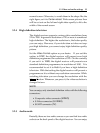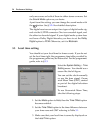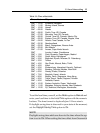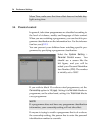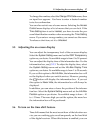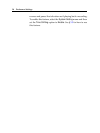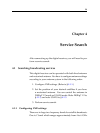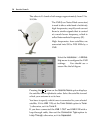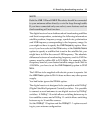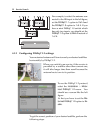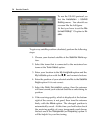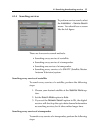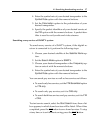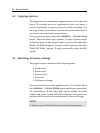
4.1 Searching broadcasting services 31
NOTE
Both the LNB 1 IN and LNB 2 IN sockets should be connected
to your antennas either directly or via the loop-through cable.
If you have connected only one socket, some features such as
dual recording will not function.
The digital receiver has a database about broadcasting satellites
and their transponders, containing the following information:
satellite position, frequency range, symbol rate, polarization
and LNB frequency corresponding to the frequency range. So
you might not have to specify the LNB Frequency option. How-
ever, if you have selected the Other entry at the Satellite Name
option to specify a satellite that is not in the satellite list, you
might have to fill in the correct LNB frequency. The absolute
difference between a broadcasting frequency and its LNB fre-
quency must be within 950 to 2150 MHz. For example, if the
frequency band of your desired satellite ranges from 3660 to
4118 MHz, you have to set the LNB Frequency option to 5150
MHz.
The LNB has to be supplied with electric power to operate. Set
the LNB Power option to On if it does not have any other power
supply.
You had better ignore the 22 kHz option.
The digital receiver is designed to be compatible with DiSEqC
(Digital Satellite Equipment Control) switches. It is possible
to connect several antennas to one digital receiver by DiSEqC
switches. A DiSEqC 1.0 switch allows switching between up to
four satellite sources and a DiSEqc 1.1 switch allows switching
between up to 16 satellite sources.
Set the DiSEqC 1.0 option and the DiSEqC 1.1 option accord-
ing to your antenna configuration.



